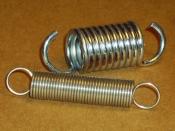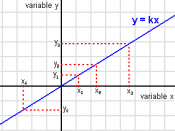HL Practical 6 Stretching Springs Aim: To investigate the elongation of steel and copper springs Hypothesis: I believe both springs obey Hooke's Law, and they will both show plastic behavior. But not at the same force applied, because both springs have different properties.
Apparatus: ÷ Hangers and masses ÷ Steel spring ÷ Self rolled copper spring ÷ Meter rule ÷ Tall retort stand ÷ Stand clamp, boss Method: Set up apparatus as shown in (fig 1). Load the steel string with a constant mass , observe the extension of the spring mass. And record the results in a table suitable table. Coil a copper wire on to a pencil making it a string. Connect it to the stand clamp, and slowly load weigh to the spring. Determine the extension of the string and record the results in a table.
Results: Two components were tested, a copper spring, and a steel spring both of them have different properties this explains why they don't extend at the same force applied.
Hooke's Law is based on the elastic behavior of certain materials. Hooke's Law only applies within the elastic limit. If the material is not able to return to its original state then it has passed this elastic limit. The inner structure of the material is changes permanently and Hooke's Law does not hold any more.
Hooke's Law For any elastic object, the elongation is directly proportional to the force applied, within the elastic limit. Therefore the mathematical expression for this concept is F is directly proportional to S The restoring force acting on the object is proportional to the negative of the displacement of the object.
F = -k s F is the restoring force; s the displacement and k is the constant of proportionality, which is the gradient of the...


